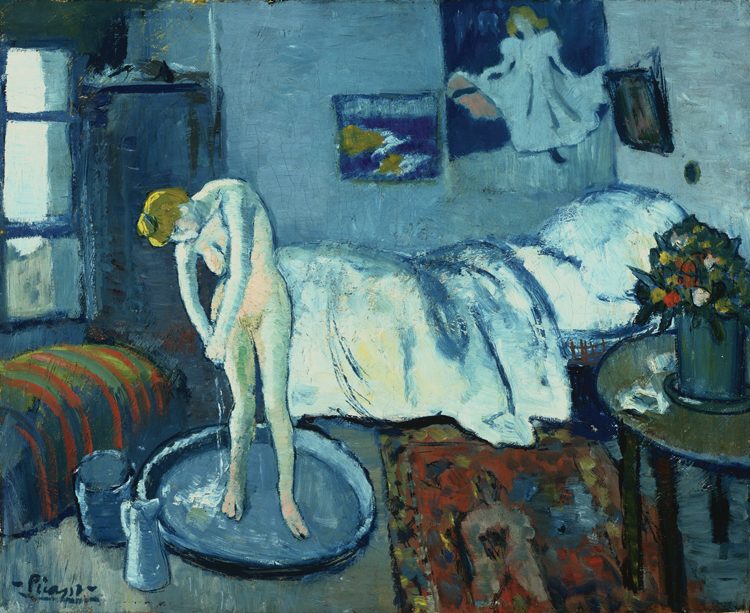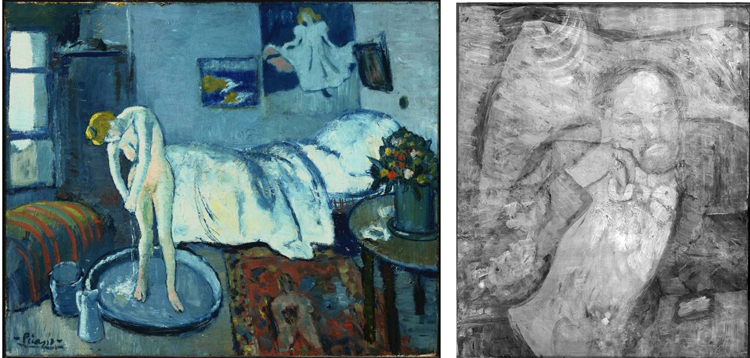Each week for the duration of the exhibition, we’ll focus on one work of art from Toulouse-Lautrec Illustrates the Belle Époque, on view Feb. 4 through April 30, 2017.

Henri de Toulouse-Lautrec, May Milton, 1895. Crayon, brush, spatter, and transferred screen lithograph, printed in five colors. Key stone printed in olive green, color stones in blue, red, yellow, and black on wove paper, 31 5⁄16 × 24 in. Private collection
Toulouse-Lautrec immortalized English dancer May Milton in this commission, which was meant to advertise a US tour that never occurred. A preparatory drawing reveals the creative impulse. For the poster, Toulouse-Lautrec used five colors, saturating the background in blue and using the white of the paper to define Milton’s body. A swirling pattern highlights the underside of her dress. The poster is shown here with a rare trial proof printed in olive green and black, one of only four impressions.
Picasso must have known of the work, because it is incorporated in his painting The Blue Room. Can you spot it below?



